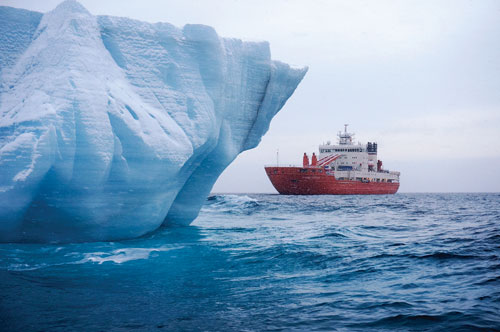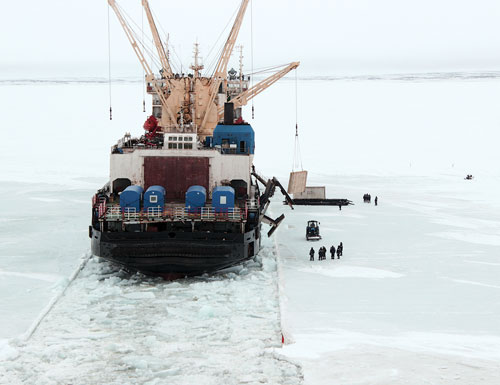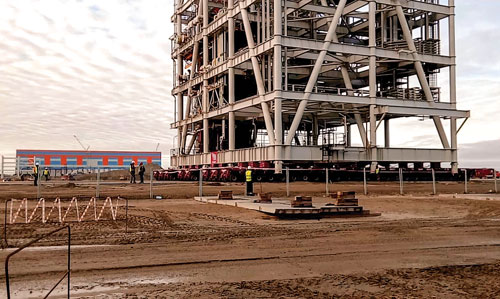Regional focus
E. Gerden, Contributing Writer
Novatek, Russia’s largest independent natural gas producer, plans to invest up to $11 B in the large-scale Arctic LNG 2 project. The project involves the construction of an LNG plant on the Gydan Peninsula—a geographical feature of the Siberian coast of the Kara Sea (Fig. 1).
 |
|
Fig. 1. The new Arctic LNG 2 plant will be built on the shores of the Kara Sea, |
The company is conducting preliminary design work for the project, which was previously threatened with cancellation by the imposition of Western sanctions on Russia. However, the Russian government’s promise to support Novatek’s first LNG project, Yamal LNG, as well as the ongoing recovery of the country’s economy, convinced Novatek to move forward with the Arctic LNG 2 project.
The capacity of the Arctic LNG 2 terminal will be similar to the Yamal LNG project on the Yamal Peninsula. The Yamal LNG project will source gas from the South Tambeyskoye field and produce an estimated 16.5 metric MMtpy of LNG. Arctic LNG 2 will draw from the Salmanovskoye and Geophysycheskoy oil and gas condensate fields; LNG production of 70 metric MMtpy is expected with adequate gas reserves. The resource base of the second project is estimated at 1.2 Tm3 and 56.5 metric MMt of C1 and C2 liquid hydrocarbons.
Design of Arctic LNG 2 project. The Arctic LNG 2 plant will be built through modular construction on gravity-based platforms in the Kara Sea (Fig. 2), rather than onshore. Other equipment for the plant will be built by Novatek at its own shipyard, which is located on the Kola Peninsula.
 |
|
Fig. 2. A ship delivers the first batch of equipment for the construction of the foundation |
Novatek believes that the use of gravity-based platforms will help avoid high logistics costs associated with the delivery of large-scale equipment to the remote Arctic region. The modular, platform-based construction will also save on building costs amid permafrost conditions. Novatek’s shipyard will house capacities for the production of concrete, as well as the steel structures and formwork. Domestic and imported building materials will be utilized.
Arctic LNG 2 has already received a license to export LNG abroad, and construction is planned to commence at the beginning of 2018. The first stage of Arctic LNG 2, with a capacity of 5 metric MMt–5.5 metric MMt, is slated for launch between 2019 and 2020. The second stage, with a capacity of 5 metric MMt–5.5 metric MMt, is anticipated to launch between 2019 and 2024, and the third stage will be put into operation between 2023 and 2025, with a similar capacity.
The new LNG plant is expected to be one of the world’s least expensive in terms of production costs. Lower infrastructure, design and building costs will reduce the project’s overall CAPEX compared to Yamal LNG. However, Russia Ministry of Energy analysts believe that the $11-B investment announced by the company for the project is too small. The Ministry expects the final spending figure to be as much as twice as high.
The technical concept for Arctic LNG 2 was provided by Kvaerner, KBR and Linde. Novatek may face problems sourcing technical materials during project implementation, however, due to the impacts of sanctions. Funding will largely come from private investments, rather than from the Russian National Wealth Fund, as in the case of Yamal LNG. Major investors in Arctic LNG 2 are expected to be European export credit agencies, as well as Chinese financial corporations and institutions, such as China National Petroleum Corp. (CNPC). The Chinese company is reportedly in talks to participate in the project.
Continuing progress on Yamal LNG. In September 2016, Novatek signed a memorandum of cooperation (MpC) with the Japan Bank for International Cooperation (JBIC) for the provision of $400 MM for the Yamal LNG project. According to JBIC’s executive director, the bank will also consider participating in Arctic LNG 2.
According to Novatek’s assessments, the Yamal LNG project will be profitable at an average gas price of $7/MMBtu. To date, almost all future production of Yamal LNG has been contracted. Supply agreements have not yet been signed for Arctic LNG 2, which is anticipated to sell most of its product on the spot market.
Novatek is considering signing contracts at 11% of the oil price, which is significantly lower than the initial expectation of 13%–14%, when oil prices were higher than $100/bbl. With ever-increasing competition in the global LNG market, it is increasingly difficult to link prices for oil and LNG. However, Novatek maintains that both the Yamal LNG and Arctic LNG 2 projects will be competitive, with lower-than-average construction costs.
The company plans to launch the first stage of the Yamal LNG project by the end of 2017. The total cost of the project, which will be implemented by the Russian company with its foreign partners—Total (20%), CNPC (20%) and Chinese Silk Road Fund (9.9%)—is estimated at $27 B.
If total LNG production from the Yamal LNG and Arctic LNG 2 projects reaches 33 metric MMt by 2025, it could give Russia up to a 7% share of the global LNG market. To date, the first stage of Yamal LNG has reached 88% completion, and the entire project has achieved 75% completion (Fig. 3).
 |
|
Fig. 3. Delivery of the Yamal LNG engineering unit on a self-propelled platform, |
The majority of the production of both plants will be exported abroad, mainly to China and other Asia-Pacific countries. Novatek has already reached an agreement with Chinese CNPC for the supply of at least 3 metric MMtpy of LNG. According to the Russian Ministry of Energy, LNG imported from Yamal could account for up to 1.6% of China’s total gas consumption, which is expected to reach 257 Bm3 in 2018. However, these forecasts do not take into account planned Chinese imports from Gazprom, which recently signed a 30-yr contract with the Chinese government for supplies of 38 Bm3/yr of LNG from 2018.
Russia races to cater to LNG market. The country’s LNG output is small at present, lagging behind major competitors such as Algeria (with production of 12 metric MMtpy), Nigeria (20 metric MMtpy), Malaysia (25 metric MMtpy) and others.
Domestic LNG production comes from the Sakhalin-2 plant, which is operated by Gazprom and produces approximately 10 metric MMtpy. This capacity is expected to increase in the coming years. In addition, Russian oil producer Rosneft plans to build two LNG plants by 2024—Pechora LNG and Far East LNG.
The Russian government hopes that the successful implementation of both Novatek LNG projects will allow the company to significantly strengthen Russia’s position in the global LNG market. GP
Eugene Gerden is an international contributing writer specializing in the global oil refining and
gas industry. He has been published in a number of prominent industry publications.




Comments